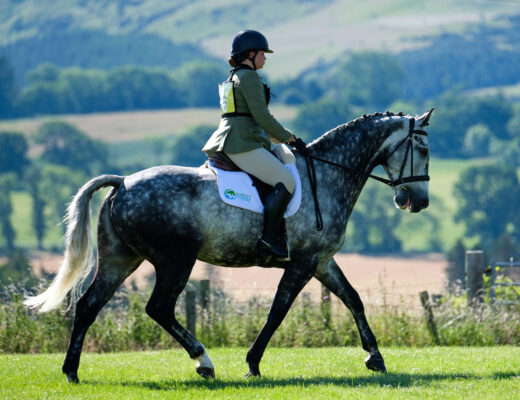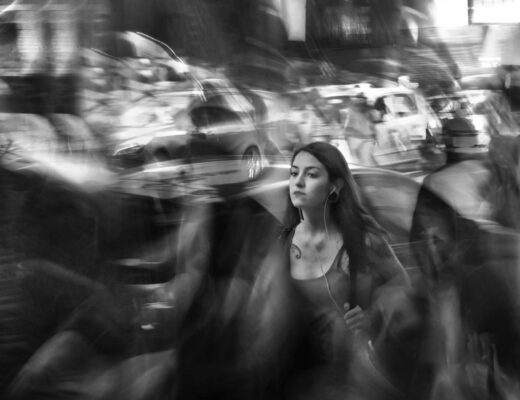I really enjoy working with amateur models for many reasons, but depending on their nature this can be tough for both the model and the photographer. If a person never stood in front of a camera (as a model), chances are that you – as a photographer – will have to break some thick ice first before you can even think of starting to shoot. They might feel uncomfortable, awkward, exposed, unsure about the possible outcome, which is totally normal unless you get to shoot a natural talent which will be far less likely to happen. But think positive as this is rather a chance for you as the photographer to improve your social skills than a problem.
Break the ice
Even if you have met the model before in a different context, things will change completely once you hold that camera in your hands. So don’t just say hello, tell the subject to stand still and start shooting. Without the camera, start a conversation about something your subject knows and likes. The more you know in advance about your subject, the easier it will be for you to come up with a topic that will start a nice and easy conversation which again will take out the tension. If it’s a bigger shoot or something you get paid for, you may also meet your subject in a bar or café days before and not only talk about the shooting but also about those small but important things that help build up a positive connection between you and your subject.

When photographing groups, pose each subject separately one after the other. Build the pose from background to foreground and make sure the individual subjects correlate with each actively or passively.
Help your subject build up self-confidence
Always be positive and never let your subject feel anything negative. If you have only just broken that 1.000$ lens you had been saving on for so long, swallow the bitter pill and don’t let it show. If things aren’t working or if you are unsure about anything, don’t let it show. If your subject does something that looks awkward, don’t say “no, that doesn’t work, do something else” but “ok, now try turning a bit more to that side and…” instead. Never just say what doesn’t work, but offer something that does work or might work. That way you will build up the self-confidence of your subject, freeing their minds of any self-criticism that can only be in the way. In the end, you will be held responsible for the results, so take control of the entire situation.

Sexiness isn’t about showing but about hiding. It is a thin line between cheap and classy – rather play with the viewer’s imagination and stay off stereotypes.
A huge helper in this kind of situations can be if you show some good pictures on the back of your camera from time to time. When you nail a shot, walk up to your subject and show it. Don’t do this too often, just from time to time to give them the feeling that you know what you are doing and that they can be looking forward to the outcome of the shooting session. Should you have the possibility of tethering directly to a computer or iPad, make sure your subject can’t look at it. It would be way too distractive and apart from the good shots also give away the not-so-good shots which could cause negative vibes. And we don’t want that, do we? Also have a small bluetooth speaker ready and play some music, preferably something your client likes. Spotify or Apple Music are great sources for relaxing music. Don’t play it too loud as you need to communicate with your subject.

One great thing about working with amateurs is that they can give you expressions you would hardly get from a professional spooling down a set repertoire.
Another thing I do on a photoshoot is explain what I do and why I do it, but not in a too technical way (unless my subject is a photographer).
What if the subject remains uneasy?
There will be times when you or both you and your subject will feel that things simply aren’t working. If that is the case, remain calm and positive. Make a break and return to the initial “getting-to-know” phase. Sit down together and go back to talking. Tell your subject that you have the feeling that he or she is still feeling a little uncomfortable, but also make clear that this is absolutely normal and that you are willing to take all the time in the world. Only if your subject insists, call it a day and make a new appointment to give it another try. Under no circumstances should you give your subject the feeling that you are giving up on him or on her. Be understanding, encouraging and patient. You can’t force good things to happen.

Especially with more intimate photos do take all the time it requires to let your subject feel comfortable. The small Fujifilm cameras are ideal for this particular type of photography as they don’t get in the way between you as a photographer ans your model as do large DSLRs.
Naked skin
Normally as a newbie photographer you won’t be approached by people from outside your inner circles for a nude or lingerie shooting, but you may want to do a shoot with your friend or partner. It is a delicate matter that requires a ton of trust, so treasure the fact that someone has this trust. Never play with that.

Strengthen the self-confidence of your subjects, so they can trust in your work and thus fully relax.
In any case stay off the cheap track. A good lingerie shooting is not about what it shows, but what is hidden and how you hide it. This is about imagination and hidden wishes rather than blunt exposing of what we all know is there. It is a very narrow road between cheap and classy. It can help a lot to study the work of professionals first, and it would be a good idea to do that together with your subject so you literally get a picture of what would and what would not be wanted.

Use the environment and don’t get too close too soon. Make your subject part of a scene before making it the main part of your images.
On a shoot, never touch your subject to move clothes, hair or bedding unless he or she made it clear that it is ok. If your subject has to change clothes or undress in the same room as you are – which depending on the location can happen – turn away, check images on the back of your camera or fumble with your equipment. Even when you are booked for a nude shoot, start off with normal environmental portraits to help your subject to get used to the situation.

Don’t be afraid to experiment with poses – the more variation there is, the more will you see what works and what doesn’t work with a particular subject.
Posing
Posing alone as a topic would open a barn door of possible approaches and methods. From my own experience I can only tell you that it takes time and practice and that there is no standard pattern you can use with each and every subject. Especially when working with amateurs it will be extremely important that you have many different options at hands. There are many good sources on the internet, YouTube being one of those. Pinterest is also a great app with countless images for inspiration.
Try to copy poses from other pictures and find out what makes a certain pose look good and what doesn’t. This will greatly improve your improvisation skills, making the workflow with your subject much more fluid. Learn the basics and start every pose from there. When photographing two or more subjects at a time, “build” the group-pose by posing each individual separately. Many amateurs feel awkward when being posed. The more they get the feeling that you know what you are doing, the easier they will work with you. Once they trust in your skills, they will be happy to follow whatever guidance you provide.
When posing your subject try to avoid saying “turn right” or “turn left”. Instead, say “turn towards me” and then move to the side you want them to turn. Tell them to mirror your movement, for example if you want them to turn their right shoulder towards you, turn your left shoulder towards them. Once your subjects gets a hang of this technique it will be a very natural way to show them what you would like them to do.
Practice posing yourself, even though you are “just” the photographer it is absolutely neccessary that you know how to pose yourself before you can instruct others! Practice this in front of a mirror when you are alone. Being able to show a certain pose rather than explain it in words makes it a lot easier for your subject to understand what you are after. It is also quite funny and an ice-breaker especially when the photographer is showing a pose of the opposite sex.

When telling your subject to look in a certain direction give them something to focus on – a nail on a wall, a mark on the floor, and ask your subject to look for details on that mark. If you don’t do this, their eyes will have an empty stare which doesn’t look good.
Your task as a photographer
Human beings shine through their personality. When amateurs ask you to shoot pictures of them they can post on social media, give to their families and friends, try not to rebuild their character by showing them in a way that does not fit them. Other than when shooting fashion or other commercial work, photographing “normal people” is a very private task and requires a sensitive eye. It thrills me when I see that my photographs just made someone happy, confident, proud. Emphasise the good, try to get around the edges, but always catch and keep that individual character of the person in front of your lens.




















